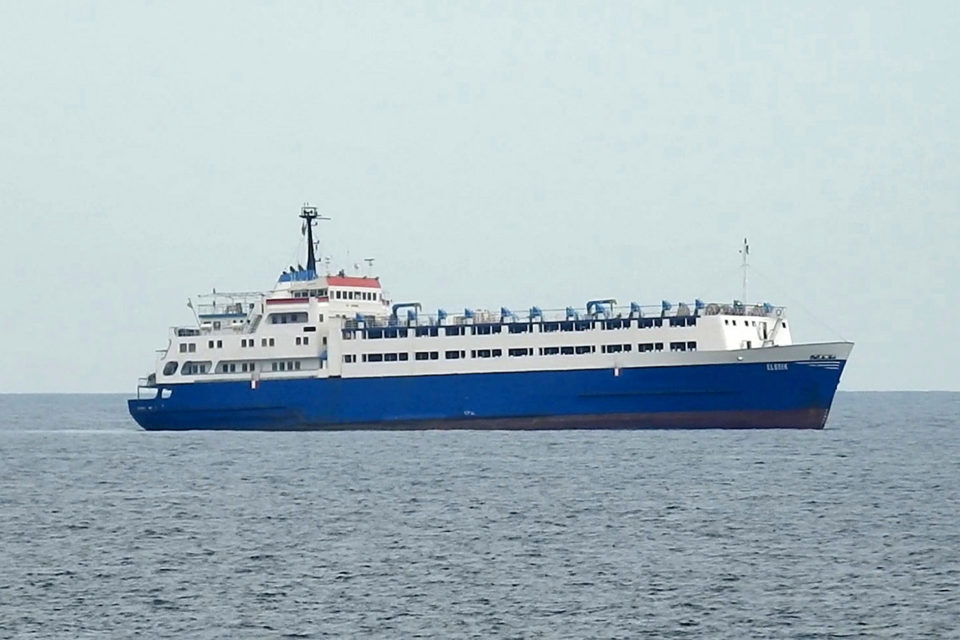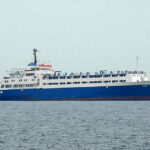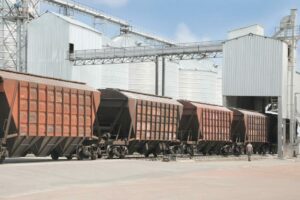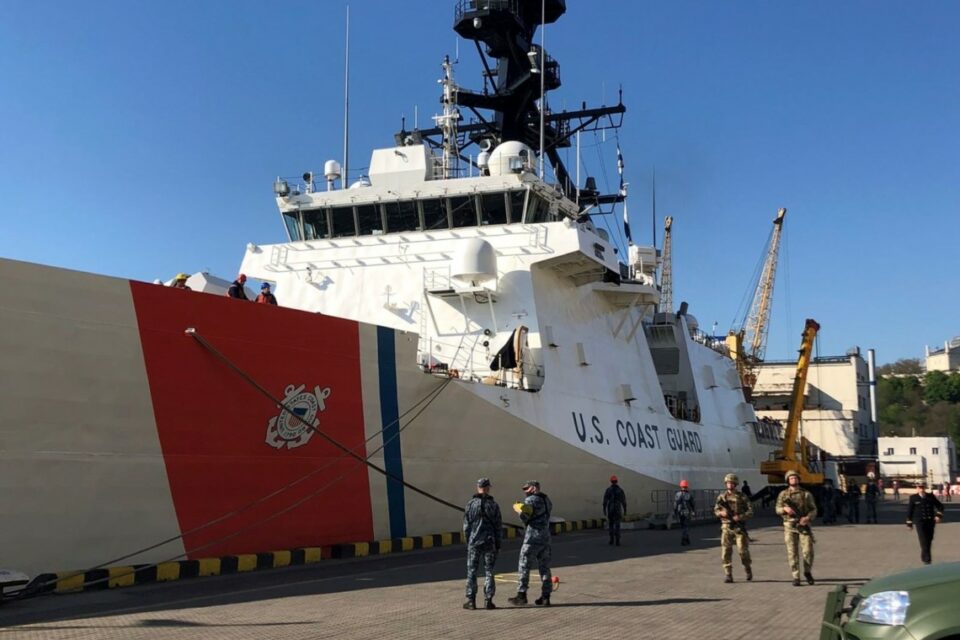Live cargo: problems of livestock vessels, the issue of humanity and expert opinion

Livestock vessels are a fairly quick way to transport live cargo by sea, but not always everything goes according to plan. Animals need to be provided not only with a place, but also with food, water, air, and most importantly, it is necessary to monitor the health of livestock. Not all vessels cope with this task, which leads to many problems – animals die, get sick, and sometimes a whole herd is infected, which in the end is simply sent to slaughter.
USM has prepared a material on how live cargo is transported and how humane it is.
Many animal rights activists oppose the transport of animals by sea, and the alternative is the export of meat, not livestock. Due to unforeseen problems, animals are often abandoned, ports do not accept cargo, and as a result, they are sent for slaughter due to “unsuitability for re-transportation.” Not only is this not humane, according to animal welfare organizations, but it is also costly.
For reference: in 2020, Ukraine exported 77.8 thousand heads of live cattle, which is 28% less than in the same period in 2019. Imports of live cattle during 2020 increased by 3.6% compared to 2019.
Situation in the world
Potential animal diseases are often one of the reasons why livestock trucks are not allowed into ports. Because of this, the vessel is literally “stuck” in the sea, and the crew is forced to seek food for the suffering animals. According to Animals International, in 2021, thousands of cattle were slaughtered due to detention at sea.
On December 17, 2020, the Karim Allah cattleship departed from the Spanish port of Cartagena to Turkey. There were 895 head of cattle on board for sale. Despite the fact that the veterinary certificates for the animals were in order, the Turkish authorities banned the Karim Allah and ElBeik (the second vessel with 1,800 animals on board and which left Tarragona the next day) from entering their ports and generally suspended the import of animals from Spain. This was due to the fact that in the Spanish province of Huesca, an outbreak of bluetongue virus disease was discovered among livestock.
For several days the animals had only water, but in the end, on Karim Allah they managed to get food in Sicily, but 15 animals died. One of the Spanish societies for the protection of animals said that the case of Karim Allah and ElBeik is further proof that a complete ban on the export of live animals is needed.
Karim Allah, which had spent more than two months at sea and could not discharge, returned to Spain in early March 2021.
According to MarineLink, a report from the Spanish Veterinary Service, uploaded to the website of the animal rights group Igualdad Animal, said that some 200 Elbeik cows died during transport and were thrown overboard.
On March 25th, it became known that the Spanish authorities ordered the slaughter of 1.6 thousand animals stuck for 4 months in the Mediterranean Sea aboard the Elbeik cattleship. The Spanish Ministry of Agriculture noted that the livestock is unsuitable for further transport by vessel and cannot be re-imported to EU countries.
Meanwhile, the Australian Maritime Safety Authority (AMSA) is conducting a targeted inspection campaign on livestock vessels. Also, AMSA will ensure that the crew of the vessels are accurately informed and instructed on how to interact with such a “cargo”. Between 1 March and 31 August, every livestock vessel operating in Australian waters will be subject to at least one inspection.
A tense situation also developed in the Suez Canal, which was blocked for 6 days by the grounded vessel Ever Given. The Egyptian Ministry of Agriculture said that more than 60,000 sheep and 400 cows remained on board 5 cargo vessels awaiting their turn to pass through the canal.
In turn, Gabriel Paun, director of the nongovernmental organization Animals International, said that about 6 of 11 vessels, filled to the brim with live animals from the countries of Southeastern Europe, are in a particularly critical situation. They should have reached the harbor in the Persian Gulf more than 4 days ago, but have not left the canal yet.
“Even with a 25 percent buffer, these vessels will now run out of animal feed long before they arrive at port. The vessel, which left Romania on March 16, was scheduled to arrive in Jordan on March 23, but instead, it should now arrive at port not before April 1. This is a 9 day delay. Even if the vessel had the necessary 25 percent additional animal feed, it would only last 1.5 days, ”emphasized Gabriel Paun.
How the requirements for the transportation of animals have been tightened in Ukraine
In 2018, the situation in the Black Sea seaport became one of the most scandalous when transporting animals from Ukraine. At the beginning of October, the company that owned the sheep carried out customs clearance of live goods to Turkey; on October 6, the “cleared” sheep were sent on a ferry, but there, for unknown reasons, they refused to accept the animals and after 2 days they were sent back to Ukraine.
Upon arrival at the port, a three-level truck with 300 sheep stood there for two weeks. The customs officers received a letter from the Odessa veterinary control service, which stated that they were asking not to allow “live goods”, since the cargo had visited the territory of Turkey, where especially dangerous animal diseases are registered.
The sheep, half of which were pregnant females, were neither watered nor fed. Then many sheep died, but the corpses remained in the truck along with the living. They wanted to send the bunch of sheep to slaughter, but Odessa animal rights activists and volunteers broke through to the truck and fed the animals. In addition, the activists blocked the road to Chornomorsk. Already on October 27, the truck was sent to Tulchin in Vinnitsa region to a recycling plant, where the living sheep were separated from the dead.
57 sheep died in the port then, 34 more – on the territory of the recycling plant in Tulchin. There were many crippled animals among the living – some were blind, some had broken paws, and the females had miscarriages. The police opened criminal proceedings for cruelty to animals, and several officials were eventually punished.
After that, the State Food and Consumer Service tightened the requirements for the transportation of animals by issuing an order “On cases of non-observance of the rules for the transportation of animals.” If the transport or the conditions of transportation do not comply with the Rules for the transportation of animals, then veterinary documents are not allowed to issue. In addition, video recording of the loading of animals is mandatory.
Expert opinion
Director of Agency for Stark Shipping Vyacheslav Sorochan noted that the main problem when transporting animals on livestock vessels is the time factor.
“Animals are no ordinary cargo. Like people, they are hungry and thirsty, sensitive to changes in temperature and possible rolling. Stress during such transportation affects their mental state. Therefore, managers always try to organize the supply chain in such a way as to deliver animals from point A to point B as quickly as possible, without downtime and waiting, ”says Vyacheslav.
From the perspective of the market and consumers, he said, sea transportation is the most profitable and humane way of delivery. So, on specialized vessels (cattleships), all conditions must be created for the safe and secure transportation of animals: two meals a day, fresh drinking water and timely cleaning of the corrals by the crew.
“Unfortunately, it often happens that a bulk fleet is converted into cattleships, and pens for animals are made of containers. In this form, in 90% of cases, humanity can be forgotten, since a converted vessel will rarely have all the necessary systems for the normal life of animals during transportation. The service personnel of a specialized vessel must necessarily include a veterinarian who monitors the animals’ health and can use medications if necessary, as well as isolate if a viral infection is suspected (to protect the rest of the herd), ”added Vyacheslav Sorochan.
Alternatives and possible solutions
A possible solution to the problem could be tightening the rules for transporting animals, which must have enough space, food and water, as well as a crew trained to properly handle live cargo. In addition, such a vessel should have food supply in case unforeseen circumstances arise.
For example, Ocean Drover, one of the world’s largest livestock transport vessels, is handled by professional beaters. An alternative can be the export of frozen meat, but this is not so profitable for suppliers, because when selling live cattle, offal, hides, fat and bones are sold.
However, this is not the only way out, for example, there is the transportation of “live cargo” by road. In this way, you can rent farms for a day, where animals can rest. The only thing is that vehicles are not able to accommodate as many large livestock as a vessel.
In turn, animal protection organizations insist on completely banning the export of live animals.





